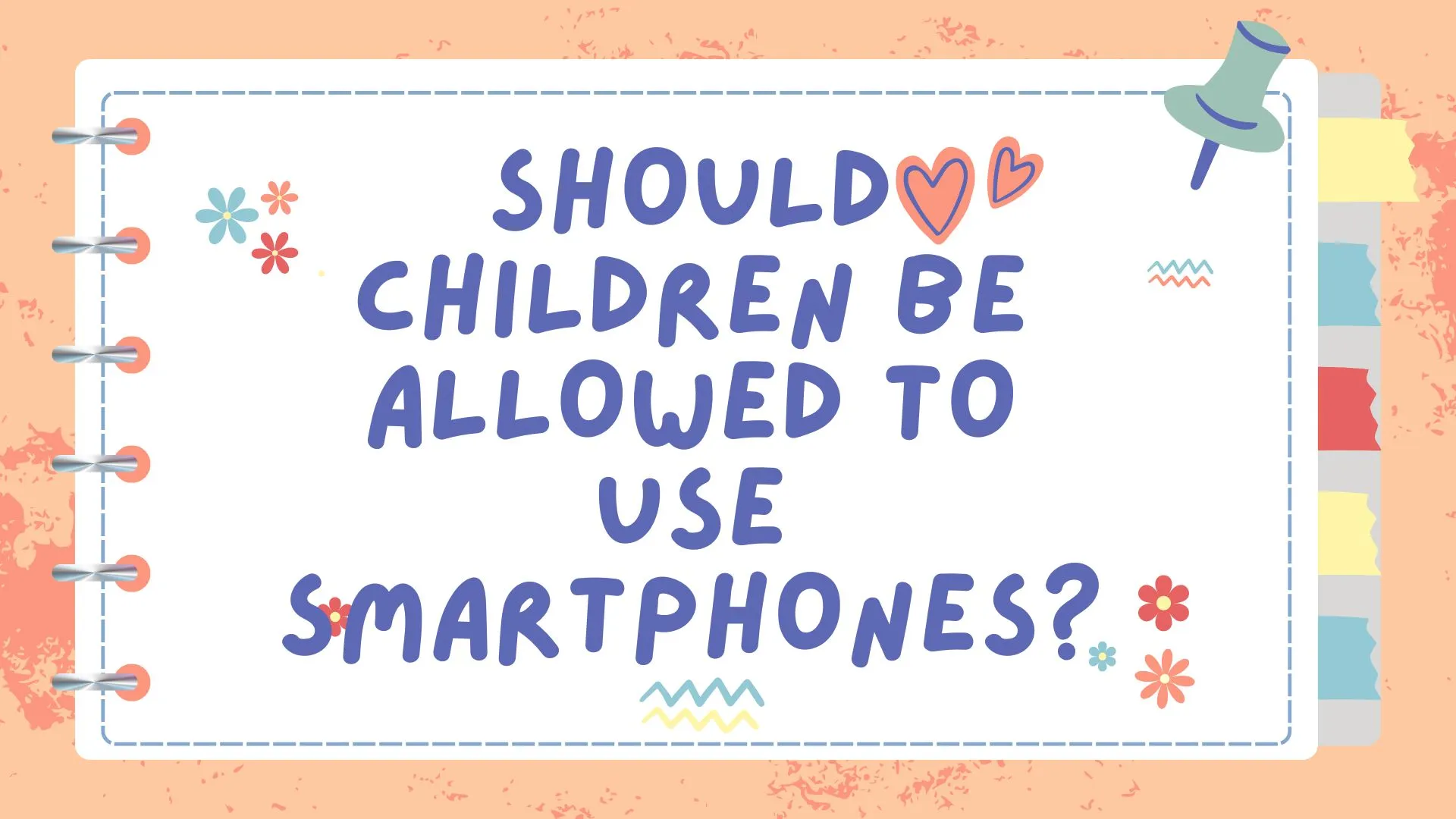Should Children Be Allowed to Use Smartphones?
It’s the question that turns every parent-teacher meeting into a showdown and every family dinner into a debate:
“Should kids be allowed to have smartphones?”
On one side, you’ve got the crowd saying “Yes! It’s the modern world—let them adapt!”
On the other side, you’ve got the “They’re turning into screen-zombies!” argument.
And somewhere in between is a kid asking for a phone “just for homework” while sneakily playing Roblox.
Whether you’re a parent, teacher, cool aunt, or just a tech geek with opinions (hi, welcome), let’s break down this debate with a full stack of facts, humor, and a dash of parenting panic.
1. First Things First: What Counts as a “Smartphone” for Kids?
We’re not talking rotary phones here, folks.
What Kids Are Really Using Their Phones For
Let’s be honest—when kids ask for a smartphone, they don’t mean “so I can check my calendar and read tech blogs.”
They mean:
-
Games
-
YouTube
-
TikTok
-
Chatting with friends
-
Maybe occasionally Googling stuff for school
So when we talk about kids using smartphones, we’re really talking about access to apps, the internet, and digital independence.
Typical Ages for Smartphone Ownership
A few stats (brace yourself):
-
Many kids get their first phone between ages 9 and 12
-
Some as young as 6 or 7 have access to a smartphone (usually shared or hand-me-down)
-
By middle school, a majority have one of their own
Whether you’re cool with that or clutching your analog planner in fear… we’re just getting started.
2. The Case For Kids Using Smartphones
Let’s hear from the “Team Tech-Savvy Tykes.”
Safety and Communication First
✅ Need to check in after school?
✅ GPS tracking to make sure they didn’t detour to the arcade?
✅ Emergency contact in their pocket at all times?
From a safety perspective, smartphones are a parent’s best friend.
Especially in situations like:
-
Walking home from school
-
Field trips
-
After-school activities
-
Getting separated in a crowd
It’s like a digital leash… only less weird.
Tech Skills Are the New Life Skills
Let’s be real—tech literacy is essential.
We’re raising a generation that will:
-
Write code instead of cursive
-
Use cloud storage more than file cabinets
-
Apply for jobs via apps and video resumes
Giving kids responsible access to smartphones helps them:
-
Learn to use tools they’ll need later
-
Navigate online spaces early (with guidance)
-
Stay competitive in school and beyond
And let’s not forget—some kids start learning to code before they can spell “algorithm.”
Connection and Inclusion
If every other kid in class has a smartphone, your kid will feel left out without one.
Group chats for schoolwork, birthday invites via text, inside jokes on social media—it’s all part of modern childhood.
No phone = social isolation. And let’s face it, FOMO hits different when you’re 11 and awkward.
The Case Against Giving Smartphones to Kids
Now let’s hear from the digital minimalists and cautious caregivers.
Screen Time = Brain Melt?
Studies show excessive screen time can lead to:
-
Shorter attention spans
-
Lower sleep quality
-
Eye strain
-
Impaired social development
And while not all screen time is evil, endless TikTok scrolling at age 8 probably isn’t brain food.
The Internet Is Not Kid-Friendly
Let’s just say it: the internet is wild.
Unfiltered smartphone access exposes kids to:
-
Inappropriate content
-
Cyberbullying
-
Scams and phishing
-
Creepy strangers
-
Peer pressure to “go viral”
Giving a kid a smartphone without limits is like giving them a car with no license, no seatbelt, and a map to every sketchy neighborhood.
Smartphones Can Mess With Mental Health
Studies have linked smartphone use in kids and teens to:
-
Increased anxiety
-
Depression
-
Self-esteem issues
-
Sleep disturbances
Especially thanks to the social media comparison trap.
Because nothing ruins your self-worth faster than your classmate getting 500 likes on a post about their dog.
The Middle Ground: Smartphones With Rules
Okay, okay—we get it. Extremes rarely work. Let’s talk balance.
Smartphone Use Doesn’t Have to Be All or Nothing
What if we said:
-
“Yes, but with limits”?
-
“Yes, but supervised”?
-
“Yes, but no TikTok until you’re 13… or 30”?
Smartphones can be useful if introduced gradually, with guidelines like:
-
No phones in bedrooms after 9 PM
-
Weekly screen-time check-ins
It’s not about saying “no” to tech. It’s about saying “yes” smartly.
Teaching Digital Responsibility Early
Instead of shielding kids from tech, teach them how to use it well.
That includes:
-
Being kind online
-
Thinking before posting
-
Spotting fake news and scams
-
Respecting others’ privacy
-
Not believing everything an influencer says about crypto
These lessons matter more than whether or not they have a phone.
The Role of Schools and Tech Companies
It’s not just a parent’s battle anymore.
Should Schools Ban Phones Entirely?
Some schools say “no phones at all.” Others say “you can use them for learning.”
Honestly? It depends.
-
In math class? Probably not.
-
During a tech lesson or emergency alert? Could be useful.
Educators need clear policies, not total chaos (or TikTok in chemistry class).
Should Tech Companies Build “Kid Modes” That Actually Work?
Parental controls are often too basic or easy to bypass.
We need:
-
Better content filters
-
Smarter time limits
-
Reports that make sense to parents
-
Less shady data tracking
Until then, most “kid-safe modes” are just wishful thinking with a cartoon interface.
Final Verdict: Should Kids Use Smartphones?
So—should we allow it? Or stick to flip phones and walkie-talkies forever?
It’s Not If—It’s How
The answer isn’t black and white. It’s not “yes” or “no.” It’s:
“How do we help kids use smartphones well?”
Smartphones can:
✅ Keep kids safe
✅ Help them learn
✅ Let them stay connected
They can also:
❌ Distract
❌ Harm mental health
❌ Expose them to dangers they’re not ready for
So no, smartphones aren’t evil. But they’re not toys either.
They’re tools. Powerful ones. And kids should be taught to use them with curiosity, caution, and context.
“Because handing a kid a smartphone is like handing them root access to the world—and even sysadmins make mistakes sometimes.”
FAQs
1. What age is appropriate for a child to get a smartphone?
There’s no one-size-fits-all answer. Many parents wait until middle school (11–13), but it depends on the child’s maturity, needs, and how you plan to supervise use.
2. Are there “kid-safe” smartphones?
Yes, some phones are designed with limited features, parental controls, and no internet access. These can be great starter devices for younger kids.
3. How much screen time is okay for kids?
Experts recommend no more than 1–2 hours of recreational screen time per day for children, especially younger ones. But quality matters more than quantity.
4. Should kids be allowed to have social media accounts?
Most platforms require users to be at least 13 years old. Even then, it’s important to monitor use and discuss online safety and digital etiquette.
5. What’s the best way to introduce a smartphone to a child?
Start with clear rules, time limits, and supervision. Use it as a teaching tool—not just a digital babysitter. Encourage open communication about what they’re doing and seeing online.




